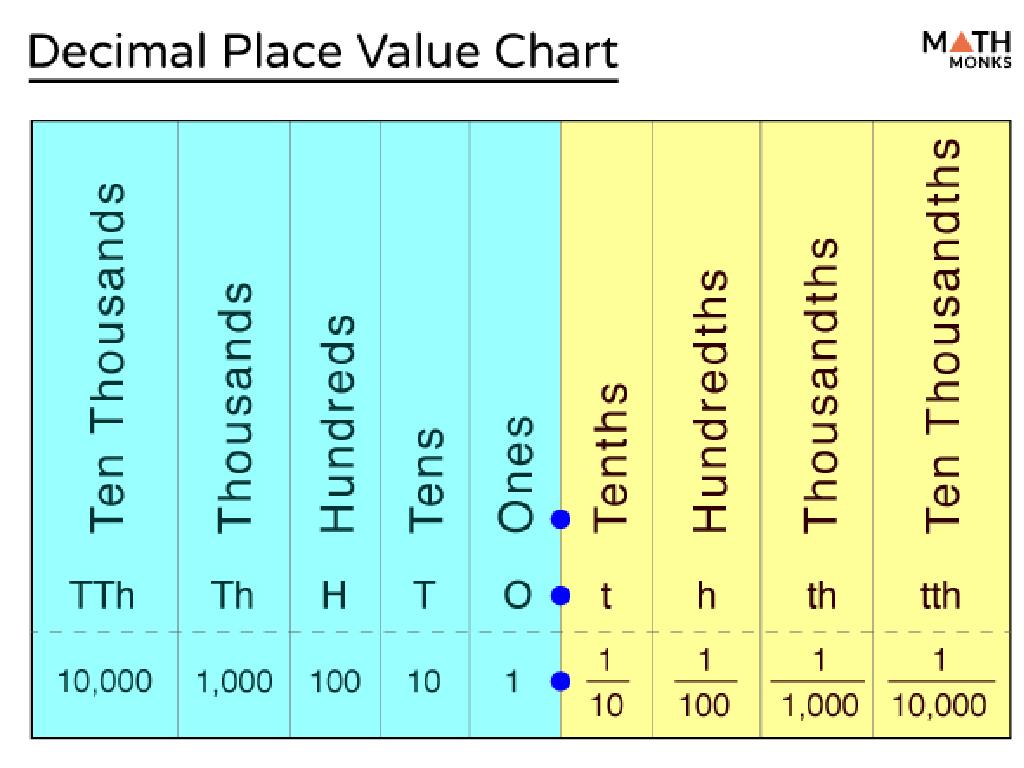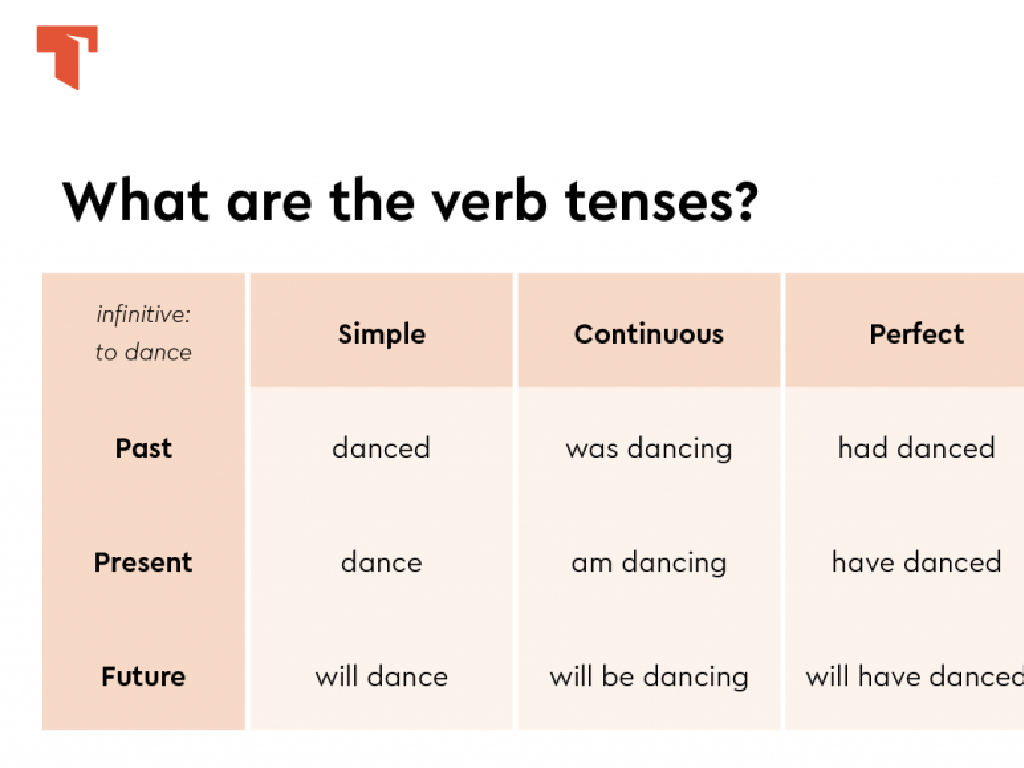Round To The Nearest Ten Or Hundred In A Table
Subject: Math
Grade: Third grade
Topic: Rounding
Please LOG IN to download the presentation. Access is available to registered users only.
View More Content
Welcome to Rounding Numbers!
– Learn what rounding means
– Round numbers to nearest ten
– If a number ends in 1-4, round down. Ends in 5-9, round up.
– Round numbers to nearest hundred
– Look at the hundreds place to round up or down.
– Why rounding matters in life
– Rounding helps estimate costs, time, and distances quickly.
|
Today’s lesson introduces the concept of rounding numbers, an essential math skill that simplifies numbers to make them easier to work with. Start by explaining what rounding is and why it’s useful. Then, demonstrate how to round numbers to the nearest ten by looking at the ones place, and to the nearest hundred by looking at the tens place. Use examples like estimating the total cost while shopping or calculating the time needed to travel a certain distance to show how rounding is applied in everyday life. Encourage students to think of other situations where rounding might be helpful.
What is Rounding?
– Rounding makes numbers simpler
– Keeps value close to the original
– Results are less accurate
– Easier numbers to work with
– For example, 67 rounded to the nearest ten is 70
|
Rounding is a fundamental concept in mathematics that simplifies numbers while maintaining a value that is close to the original number. The idea is to make calculations easier and faster, especially when exact values are not required. While the rounded number is less precise, it is more practical for quick estimations and mental math. When teaching this concept, use visual aids like number lines to help students see the distance between numbers and understand why we round up or down. Encourage them to practice with different numbers and identify when it might be useful to round numbers in real-life situations, such as estimating costs or distances.
Rounding to the Nearest Ten
– How to round to the nearest ten
– Look at the number right of the tens place
– Numbers 5 or more, round up
– 36 has 6, so it goes up to 40
– Numbers 4 or less, round down
– 34 has 4, so it stays at 30
– Practice with examples: 34 and 36
|
This slide introduces the concept of rounding numbers to the nearest ten. Start by explaining the tens place and its importance in rounding. Show students how to identify the number immediately to the right of the tens place and use it to decide whether to round up or down. Use the examples 34 and 36 to illustrate the rule: if the number is 5 or more, increase the tens place by one and change the ones place to zero; if it’s 4 or less, keep the tens place the same and change the ones place to zero. Encourage students to practice with more examples and provide immediate feedback to reinforce learning.
Rounding to the Nearest Hundred
– How to round to the nearest hundred
– Look at the tens place to decide
– Rule: 5 or more, round up; 4 or less, round down
– This rule helps us choose the direction
– Example: 250 rounds to 300
– Because 5 is in the tens place, we go up to 300
– Example: 243 rounds to 200
– Since 4 is in the tens place, we go down to 200
|
This slide introduces students to the concept of rounding numbers to the nearest hundred. Emphasize the importance of the tens place in determining whether to round up or down. Use the examples provided to illustrate the rounding rule: if the tens place is 5 or more, increase the hundreds place by one and change the rest of the numbers to zero; if it’s 4 or less, keep the hundreds place the same and change the rest to zero. Encourage students to practice with additional examples and to explain their thinking process as they determine whether to round up or down.
Rounding with a Table
– What is a rounding table?
– A tool to help us see where numbers go when we round them.
– Organizing numbers for rounding
– We sort numbers into rows and decide if they round up or stay the same.
– Practice rounding on the table
– Let’s try rounding numbers as a class and see how the table helps us.
– Rounding to tens and hundreds
– Learn to round numbers to the nearest ten or hundred using the table.
|
This slide introduces the concept of a rounding table, which is a visual aid to help students understand the process of rounding numbers to the nearest ten or hundred. Explain that a rounding table is like a map that shows us where numbers belong after rounding. Demonstrate how to organize numbers in the table and guide students through several examples as a group. Emphasize the importance of identifying the place value to which they are rounding and deciding whether to round up or keep the number the same. Provide clear examples of rounding to the nearest ten and hundred, and encourage students to practice with their own numbers in the table.
Let’s Practice Rounding!
– Fill out a rounding table
– Round to nearest ten or hundred
– If the digit in the ones place is 5 or more, round up. If it’s less than 5, round down.
– Decide the rounding rule
– For hundreds, look at the tens digit to decide.
– Share answers with the class
|
This slide is for a class activity where students will practice rounding numbers to the nearest ten or hundred. Provide students with a table where they can input numbers and their rounded values. Explain the rules for rounding: if the last digit is 5 or more, round up; if it’s less than 5, round down. For rounding to the nearest hundred, they should look at the tens place. After completing the table, students will share their answers, allowing them to learn from each other and reinforce their understanding of rounding. Possible activities include rounding numbers found in daily life, such as prices, distances, or weights.
Rounding Game: Ten or Hundred?
– Let’s play a rounding game!
– Listen to the number I say
– Hold up ‘Ten’ or ‘Hundred’ sign
– Show which place you’d round the number to
– Get ready for fun learning!
|
This interactive game is designed to help students practice rounding numbers to the nearest ten or hundred in a fun and engaging way. As the teacher, you will call out different numbers, and students will respond by holding up signs indicating whether they would round the number to the nearest ten or hundred. This activity not only reinforces their understanding of rounding but also allows them to actively participate and stay engaged. Prepare signs with ‘Ten’ and ‘Hundred’ for the students beforehand. You can vary the game by using a mix of easier and more challenging numbers, and by encouraging students to explain their reasoning after making their choice. This will help you assess their comprehension and provide immediate feedback.
Class Activity: Rounding Relay Race
– Split into teams for a relay
– Round numbers on a baton
– Write the nearest ten or hundred on your baton
– Pass the baton to teammates
– First team with correct rounds wins!
|
This activity is designed to make learning rounding fun through a physical relay race. Divide the class into small teams, and provide each team with a ‘baton’ this could be a stick or a tube with numbers written on it. Each student must round one number to the nearest ten or hundred before passing the baton to the next team member. Teachers should ensure that students understand how to round numbers before starting the activity. Possible variations include using different sets of numbers for each team, timing each team for additional challenge, or having students round numbers to the nearest thousand for advanced practice. The goal is to reinforce the concept of rounding in a dynamic and engaging way.
Rounding Mastery: Conclusion
– Congratulations on learning rounding!
– Rounding simplifies estimation
– Rounding to 10 or 100 helps with quick approximations
– Practice makes perfect in rounding
– The more you practice, the quicker you’ll identify which ten or hundred a number is closest to
– Aim to become a rounding expert
|
This slide wraps up the lesson on rounding to the nearest ten and hundred. It’s important to reinforce the students’ confidence by congratulating them on what they’ve learned. Emphasize the practicality of rounding for making numbers easier to work with, especially when estimating. Encourage continuous practice, as this will help them become more proficient and faster at rounding numbers. As a follow-up, consider assigning homework that involves rounding various numbers or creating real-life scenarios where they would need to round numbers to the nearest ten or hundred.





